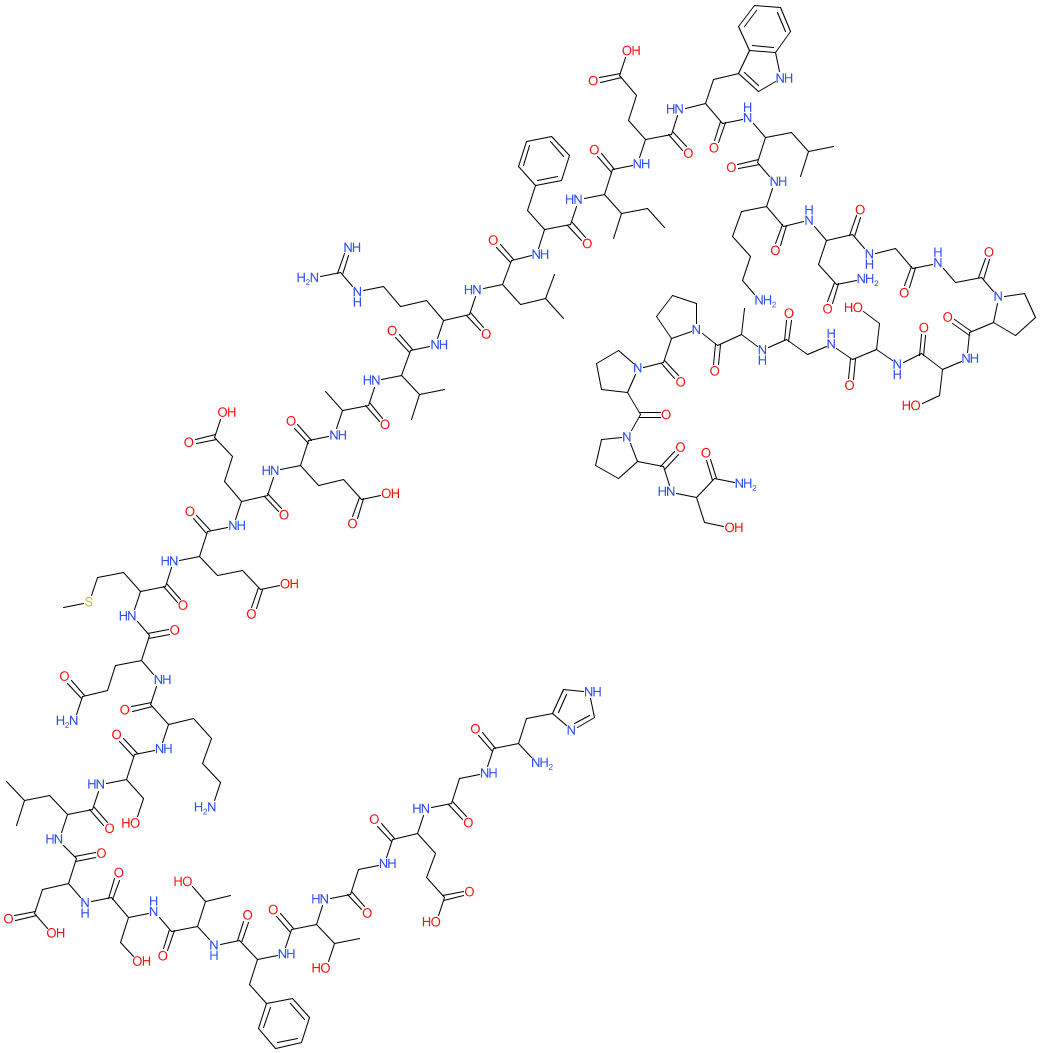GtoPdb is requesting financial support from commercial users. Please see our sustainability page for more information.
|
Synonyms: AC 2993 | AC002993 | AC2993A | Bydureon® | Byetta®
exendin-4 is an approved drug (FDA (2005), EMA (2006))
Compound class:
Peptide
Comment: This peptide is found in the venom of the Gila monster Heloderma suspectum. Exenatide is the synthetic form of the peptide used in clinical practice. Exendin-4 is a GLP-1 analogue/mimetic [3]. There is some ambiguity surrounding the exact stereochemistry of exendin-4. Representations of the peptide's full chemical structure can be accessed using the PubChem, ChEMBL and ChEBI links that we provide in the Database Links table.
Ligand Activity Visualisation ChartsThese are box plot that provide a unique visualisation, summarising all the activity data for a ligand taken from ChEMBL and GtoPdb across multiple targets and species. Click on a plot to see the median, interquartile range, low and high data points. A value of zero indicates that no data are available. A separate chart is created for each target, and where possible the algorithm tries to merge ChEMBL and GtoPdb targets by matching them on name and UniProt accession, for each available species. However, please note that inconsistency in naming of targets may lead to data for the same target being reported across multiple charts. ✖
View more information in the IUPHAR Pharmacology Education Project: exenatide |
|
|||||||||||||||||
| Bioactivity Comments |
| Binds to the GLP-1 receptor. |
| Selectivity at GPCRs | |||||||||||||||||||||||||||||||||||||||||||||||||||||||
| Key to terms and symbols | Click column headers to sort | ||||||||||||||||||||||||||||||||||||||||||||||||||||||
|
|||||||||||||||||||||||||||||||||||||||||||||||||||||||
| Targets where the ligand is described in the comment field | |
| Target | Comment |
| synuclein alpha | The formation of abnormal and toxic synuclein alpha oligomers and larger fibrilar aggregates underlies neurodegeneration in Parkinson's disease and other neurodegenerative diseases. There has therefore been much interest in developing therapeutics that are able to prevent formation or functionally block these aggregates as potential disease-modifying options to slow disease progression. As of early 2024, clinical evidence was beginning to demonstrate two pharmaceutical mechanisms that offered disease-modifying efficacy (in patients in the early stages of Parkinson's disease): anti-diabetes GLP-1 agonist drugs (lixisenatide and exenatide/exendin-4 for example) [1-2,5] and the monoclonal antibody prasinezumab that selectively targets aggregated forms synuclein alpha [7]. It remains to be determined if these mechanisms hold in larger clinical studies. |








